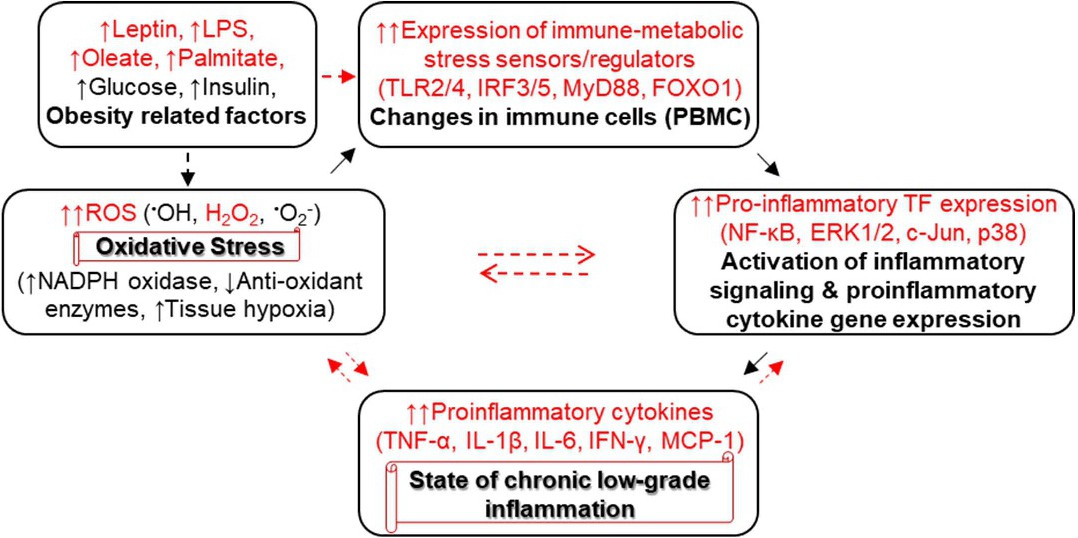Fig. 7. A schematic illustration of the "feed forward model" of metabolic inflammation. The key findings (text in red) of our study support a suggested "feed forward model" (solid black arrows) of chronic low-grade inflammation, also called metaflammation, in which, oxidative stress induced experimentally in human PBMC by H2O2 treatment drives the intracellular ROS which promotes the cellular expression of immunometabolic stress sensors or regulators including TLR2, TLR4, IRF3 and IRF5 (as well as MyD88 adaptor protein and FOXO1 metabolic regulator: presented as supplemental data). Our data show that TLR2/4 expression in PBMC can be further amplified by a cooperative interaction between ROS (H2O2) and obesity-associated factors such as leptin, endotoxin (LPS), oleate, and palmitate (dashed black arrow). These changes are paralleled by activation of proinflammatory transcription factors related to NF-κB/MAPK signaling pathways, reminiscing a state of cellular activation to support inflammatory gene expression. Hence, ROS-stressed PBMC display the upregulated expression of signature proinflammatory cytokines/chemokine including TNF-α, IL-1β, IL-6, IFN-γ, and MCP-1 which is consistent with a state of metabolic inflammation. As supported by other studies, proinflammatory cytokines such as TNF-α, IL-1β, and IFN-γ can also elevate expression of the mitochondrial ROS to promote oxidative stress and metabolic inflammation. Note: Dashed red arrows represent other possible interactions in this metaflammatory loop, supported by existing evidence (the references are cited already in the text).
